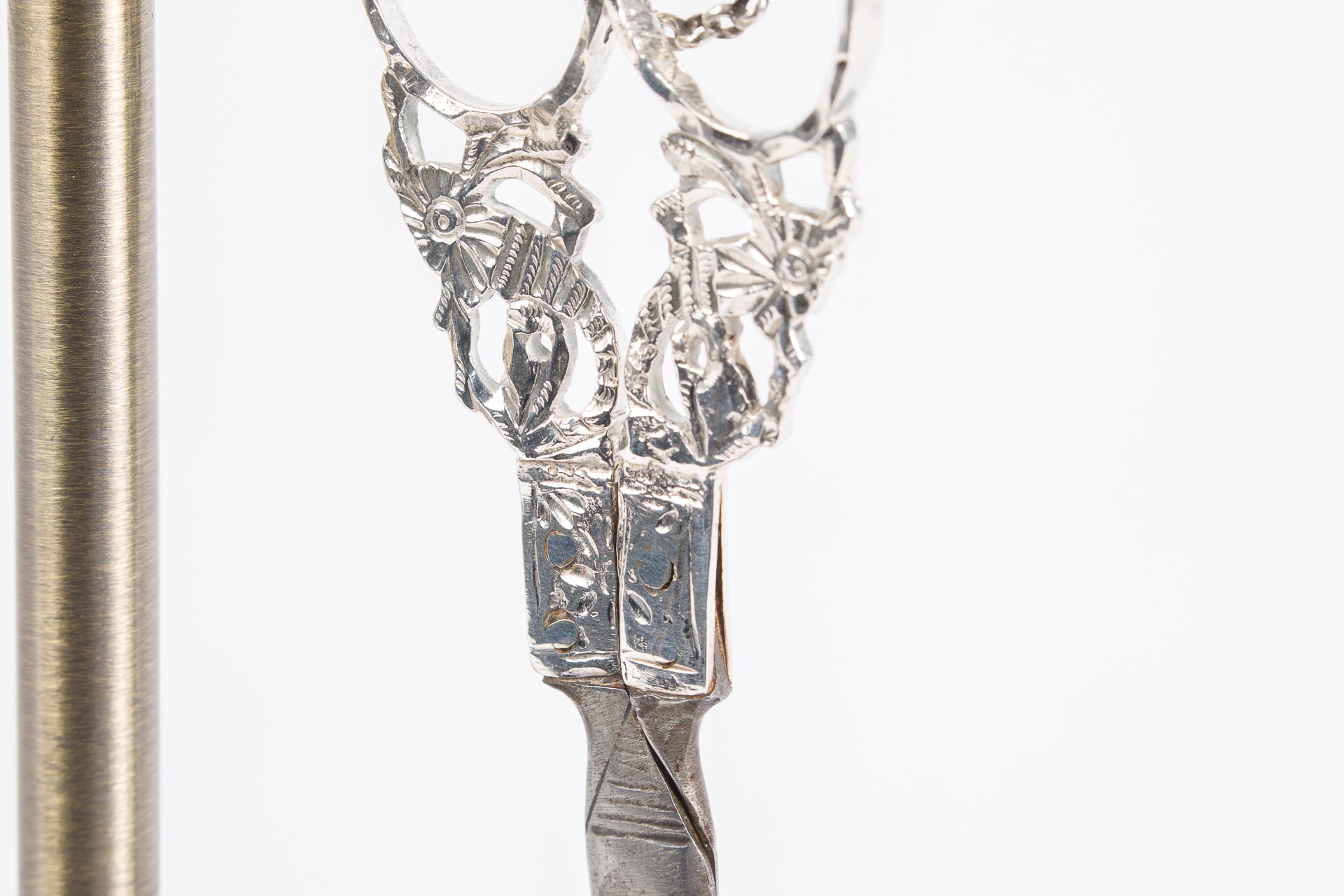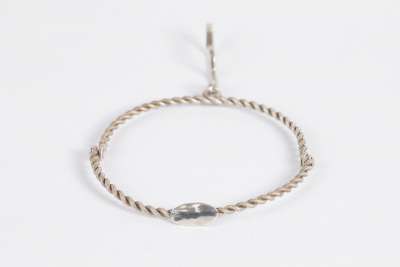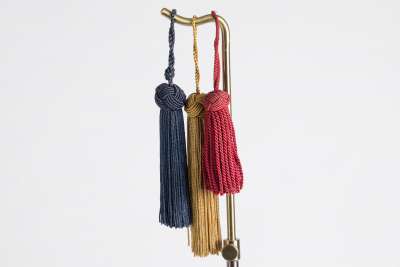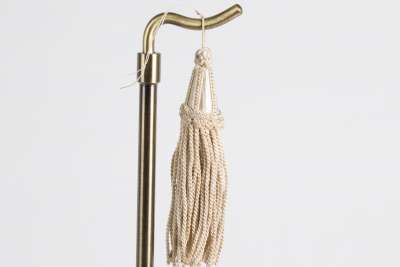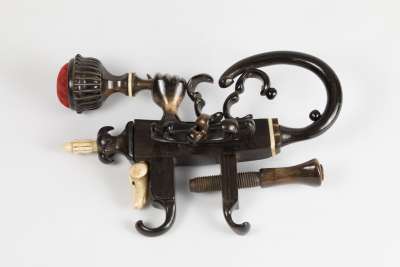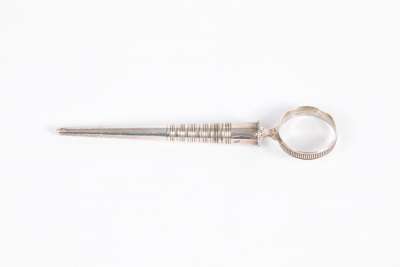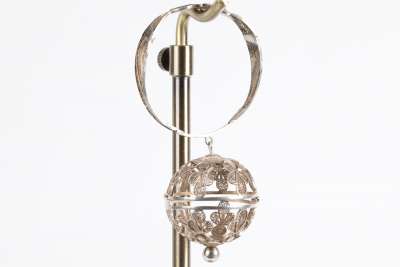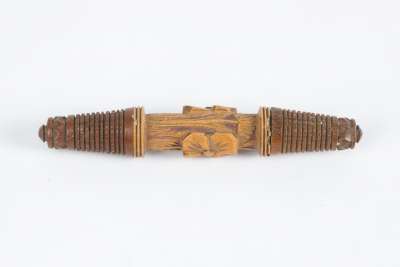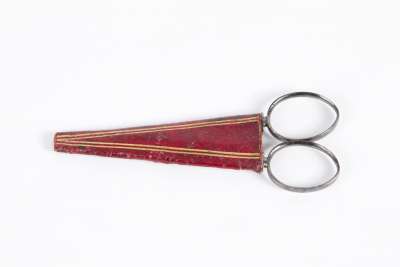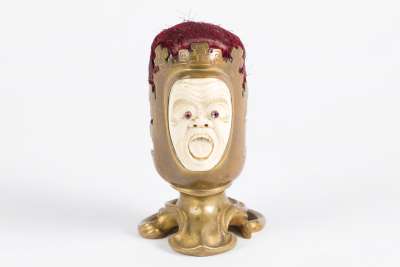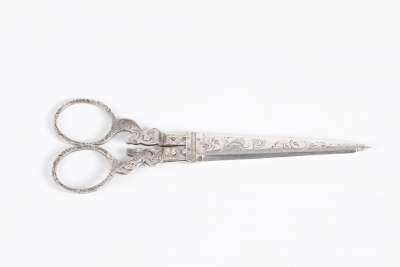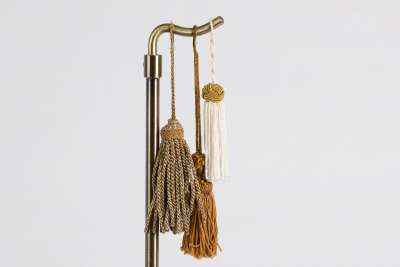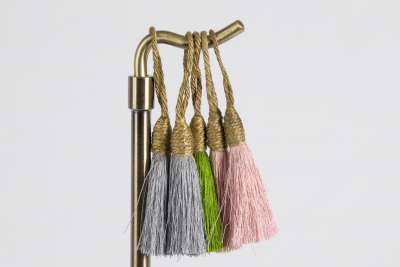This elegant pair of chatelaine scissors originates from the Netherlands and dates back to circa 1900. Known for their unique design, the scissors feature intricately designed silver handles that are complemented by a functional hook, allowing them to be easily attached to a chatelaine belt. The craftsmanship reflects the attention to detail typical of Dutch needlework tools from this era. Examples of similar scissors can be found in Kay Sullivan's book 'Needlework Tools and Accessories', highlighting their historical significance and design. These scissors are not only a testament to the practical needs of the time but also to the artistry involved in everyday tools.
Condition Report
The chatelaine scissors exhibit wear that is consistent with their age and historical use, reflecting their journey through time. The silver handles show minor surface scratches common to items of this age, which add character without detracting from their overall appeal. The blades remain functional, though they bear slight tarnishing, a natural occurrence in antique silver. The hook is intact, providing secure attachment to a chatelaine. Given the scissors' age, these signs of wear are expected and typical, preserving the authenticity and charm of these historical tools. Overall, the condition is indicative of careful use and preservation, making them a valued addition to any collection.
Dimensions
Weight: 100gm, Length: 17cm with chain 36.5cm, Width: 5cm.
Essential Needlework Companion
These chatelaine scissors were originally intended as a practical companion for needlework enthusiasts. Attached to a chatelaine, a decorative belt hook or clasp worn at the waist, they allowed for easy access to scissors during sewing tasks. The design ensured that essential tools were readily available, reflecting the importance of needlework in daily life. Such scissors were not merely functional but also served as a status symbol, showcasing the owner's taste and attention to detail in their needlework accessories.
Art Nouveau Influence
The chatelaine scissors embody the Art Nouveau style, which was prominent in the late 19th and early 20th centuries. This style is characterised by its flowing lines, organic forms, and intricate detailing, all of which can be seen in the design of the silver handles. The period was known for its emphasis on craftsmanship and design, which is evident in these scissors. The artistic style not only enhanced the visual appeal but also elevated the scissors from a mere tool to a piece of art, reflecting the broader artistic movements of the time and their influence on everyday objects.
Craftsmanship in Silver
Crafted from silver, these chatelaine scissors required a high level of skill and craftsmanship. Silver was a popular material for such tools due to its durability and the ease with which it could be moulded into intricate designs. The handles were likely cast and then hand-finished, allowing for the fine detailing that characterises this piece. The blades, made from a more robust metal, were fitted into the handles to provide functionality. This combination of materials and techniques highlights the expertise of the artisans who created such tools, ensuring they were both beautiful and practical.
Renowned Dutch Craftsmanship
These chatelaine scissors are a product of renowned Dutch craftsmanship, a region celebrated for its high-quality metalwork during this period. Dutch artisans were known for their ability to blend functionality with decorative elements, resulting in objects that were both useful and visually appealing. The silverwork on these scissors exemplifies this tradition, with each piece meticulously crafted to meet the dual demands of practicality and aesthetic beauty. The presence of similar examples in literature underscores their status as representative of Dutch ingenuity and artisanal excellence of the time.
Collected by Needlework Enthusiasts
Antique chatelaine scissors like these are highly sought after by collectors, particularly those with an interest in needlework tools and accessories. Their appeal lies in their dual nature as both a practical item and a piece of historical artistry. Collectors appreciate the craftsmanship, the historical context, and the role such tools played in the lives of their original owners. Additionally, their representation in literature, such as Kay Sullivan's book, adds a layer of documented provenance, enhancing their desirability. These scissors are not just a collector's item but also a tangible link to the past, celebrating the intersection of art and utility.


